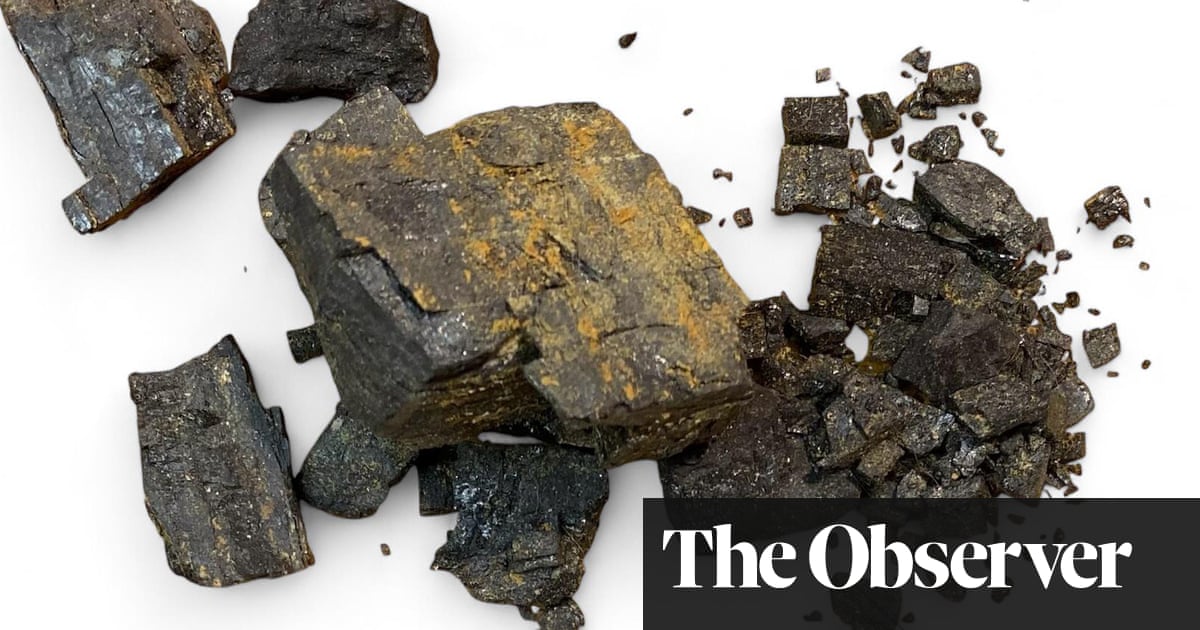They are some of the most evocative historic artefacts that fate ever consigned to the bottom of the sea. Now, coal from the Titanic, a piece of rope from the Mary Rose and musket flints from the shipwreck that inspired William Wordsworth to write one of his greatest works are to be sold at a very rare auction.
The artefacts are among the 8,000 objects salvaged from 150 wrecks that will go under the hammer for the first time next month.
The entire collection of the Shipwreck Treasure Museum in Charlestown, near St Austell, Cornwall, is up for sale after the tourist attraction, which is owned by the family of Tim Smit, co-founder of the Eden Project, was put on the market for £1.95m earlier this year but failed to attract a buyer.
“I can’t imagine there’s a more important collection of maritime archeology worldwide,” said David Lay of Lay’s Auctioneers, which is selling the lots. “There are many wonderful, rare discoveries.”
Founded in 1976 by Richard Larn, a former navy diver and historic shipwreck expert, the museum’s extraordinary collection is being broken up into 1,254 lots and includes rare items from wrecks that are now legally protected historic sites or designated war graves.
This includes 46g of coal, recovered in 1994, which was onboard the Titanic to fuel the steamship’s doomed voyage to New York in 1912.
While a gold pocket watch recovered from the body of the Titanic’s wealthiest passenger, John Jacob Astor, sold for a record-breaking £1.2m earlier this year, the lumps of coal have been valued at £400 to £600. Lay is hoping the auction will attract fans of the Titanic from around the world.
Another collector’s item in the sale is a piece of rope recovered from Henry VIII’s Tudor flagship, the Mary Rose. Estimated to fetch £5,000 to £10,000, it was given to Larn after he reportedly helped the Mary Rose Trust to dislodge the ship from the depths of the Solent using underwater explosives.
“Virtually nothing that comes from the Mary Rose ever comes on to the market,” said Lay. “It’s just so unusual.”
Musket flints recovered from the Earl of Abergavenny will also go under the hammer, centuries after news of the shipwreck devastated Wordsworth and his sister, Dorothy.
The death of their brother, John, who was captain of the ship when it sank in Weymouth Bay in 1805, moved Wordsworth to write several laments, including Elegiac Stanzas Suggested by a Picture of Peele Castle in a Storm, Painted by Sir George Beaumont.
“A deep distress hath humanised my soul,” Wordsworth writes in the 1806 poem, an autobiographical masterpiece about the transformative power of empathy, suffering and grief. “Not for a moment could I now behold a smiling sea.”
after newsletter promotion
Jeff Cowton, the principal curator at Wordsworth Grasmere, thinks the Romantic poet crossed an emotional threshold when he heard his brother had drowned, and is trying to convey that in the poem. “He realises in the poem that he can never go back now he’s experienced what it is to be human in all its grief as well as its joys,” said Cowton.
John had planned to support his brother and sister financially after making his fortune onboard the trade ship, which was bound for China. “Because that money didn’t come in, it meant Wordsworth was very reliant on selling poetry,” said Cowton. This soon became a financial struggle, and in 1813, at the age of 43, he was compelled to curtail his poetry and take a civil service job as a distributor of stamps.
The musket flints would have been used to create a spark to light gunpowder and were found on the wreck in “incredible” condition. “They look new,” said Lay, who has valued the flint at £100 to £200.
Other artefacts on sale include a large piece of ornately carved wood, valued at £20,000 to £30,000, from the stern of HMS Eagle, part of the British fleet which took Gibraltar in 1704. HMS Eagle was shipwrecked off the Isles of Scilly in 1707 after returning from battle, and its entire crew of 800 was lost. The government introduced the Longtitude Act as a result of the disaster, offering a £20,000 reward to inventors of a reliable method for measuring longitude at sea.
It was revealed in the Observer last year that, well into his 70s, Wordsworth was still deeply affected by the tragedy of his brother’s death on the Earl of Abergavenny.
In a letter from 1848, he appears to be seeking solace by collecting wooden boxes and walking sticks made from timbers salvaged from other shipwrecks.



